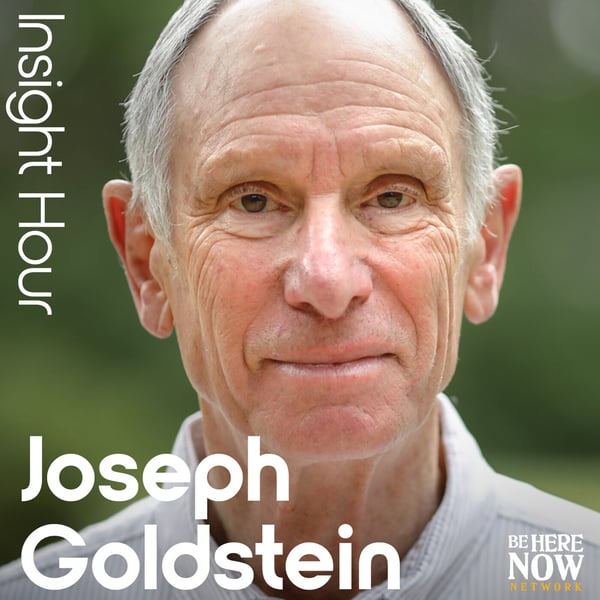Ep. 166 – Opening to Fear
Insight Hour with Joseph Goldstein
Be Here Now Network
4.8 • 864 Ratings
🗓️ 31 May 2023
⏱️ 49 minutes
🧾️ Download transcript
Summary
Joseph Goldstein talks about working with and opening to fear as he pinpoints the three types of deeply conditioned fears that keep us from recognizing our own Buddha nature.
“What happens as proceed along this journey of practice is that we come to our edges, we come up to our boundaries of what is acceptable; what is acceptable in terms of physical sensation, what is acceptable in terms of mind states or feelings or emotions. And those are our boundaries at which fears in the mind begin to reveal themselves. Can we go beyond these boundaries? Can we go beyond the edges? Is there a way of working with fear and understanding it so that it is no longer a limitation for us?” – Joseph Goldstein
In this episode, Joseph explores:
- How the practice of Dharma is a path of opening, but fear is often something that closes us down
- How fear is a manifestation of aversion
- The three types of deeply conditioned fears that keep us closed down: fear of pain, fear of insecurity, and fear of death
- How we can work directly with the mind state of fear through loving acceptance and discriminating wisdom
“So we learn how to open, we learn to come to our boundaries, our edges, our limitations; we see the fear that may be operating there, and we learn to work with the fear, we include the fear in our practice.” – Joseph Goldstein
This dharma talk from November 11, 1985, was originally published on Dharma Seed.
See Privacy Policy at https://art19.com/privacy and California Privacy Notice at https://art19.com/privacy#do-not-sell-my-info.
Transcript
Click on a timestamp to play from that location
| 0:00.0 | And instead of simply identifying with and strengthening this conditioned fear of unpleasant sensation, is it possible to soften the mind, to open the mind. |
| 0:19.0 | Remember, this path of Dama practice is a path of opening to what is true. If painful feeling is what is true in |
| 0:28.7 | the moment, can we open to it? Can we feel it? Welcome to the Joseph Goldstein Inside Hour. |
| 0:52.4 | This podcast is an expression of our shared interest in self-discovery. |
| 0:57.0 | Join Joseph as he shares his deep knowledge of the path of mindfulness. |
| 1:03.8 | If you are interested in supporting this podcast, |
| 1:07.1 | please go to be here now network.com |
| 1:10.3 | slash Joseph. |
| 1:22.0 | The practice of darma is a path of opening. |
| 1:32.0 | It's opening to our senses, opening to our perceptions, opening to our emotions, |
| 1:38.8 | opening to our emotions, to our thoughts, opening to the characteristics of experience, to the impermanence and |
| 1:51.4 | unsatisfactoringness and selflessness. |
| 1:58.0 | An opening in very or increasingly deep and subtle ways to each of these aspects of what is true. |
| 2:11.0 | It's also opening to places of silence and there are many levels of |
| 2:18.0 | silence of mind. |
| 2:20.0 | Meninjiji, one of my first teachers, once gave a three hour talk on the 21 kinds of silence. There's a vastness of mind and of experience to open to. What's important to understand in our practice to get the way of practice is not a reaching out for something. |
| 2:58.5 | It's not a trying to get or a trying to hold on. It is rather an opening to our own Buddha nature, |
| 3:12.0 | our own |
| 3:13.3 | essential nature. |
| 3:16.6 | because darma means truth. |
| 3:19.2 | And the truth is here all the time. |
| 3:21.6 | So it's not something that we don't have, but somehow we have to get. |
... |
Please login to see the full transcript.
Disclaimer: The podcast and artwork embedded on this page are from Be Here Now Network, and are the property of its owner and not affiliated with or endorsed by Tapesearch.
Generated transcripts are the property of Be Here Now Network and are distributed freely under the Fair Use doctrine. Transcripts generated by Tapesearch are not guaranteed to be accurate.
Copyright © Tapesearch 2025.

